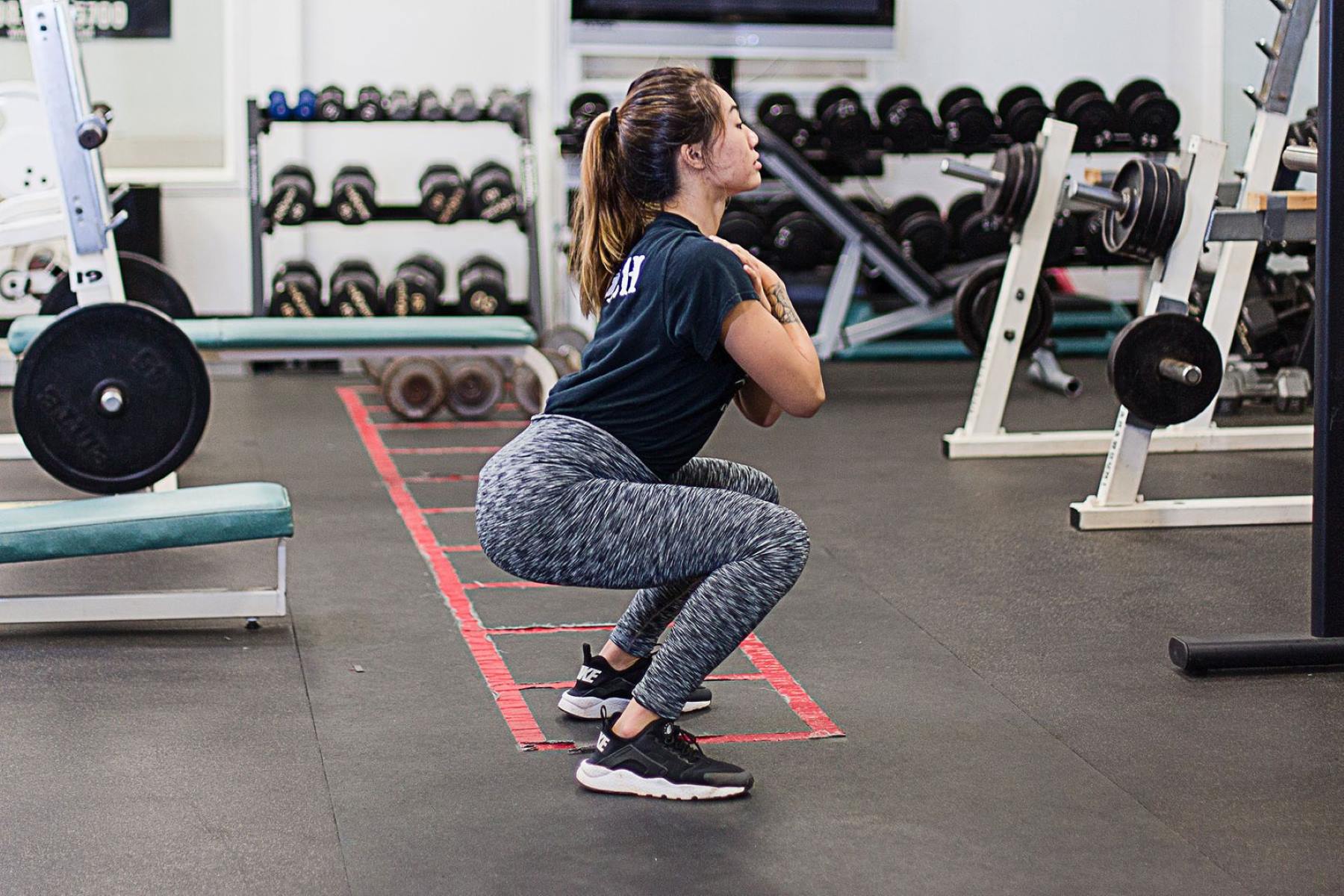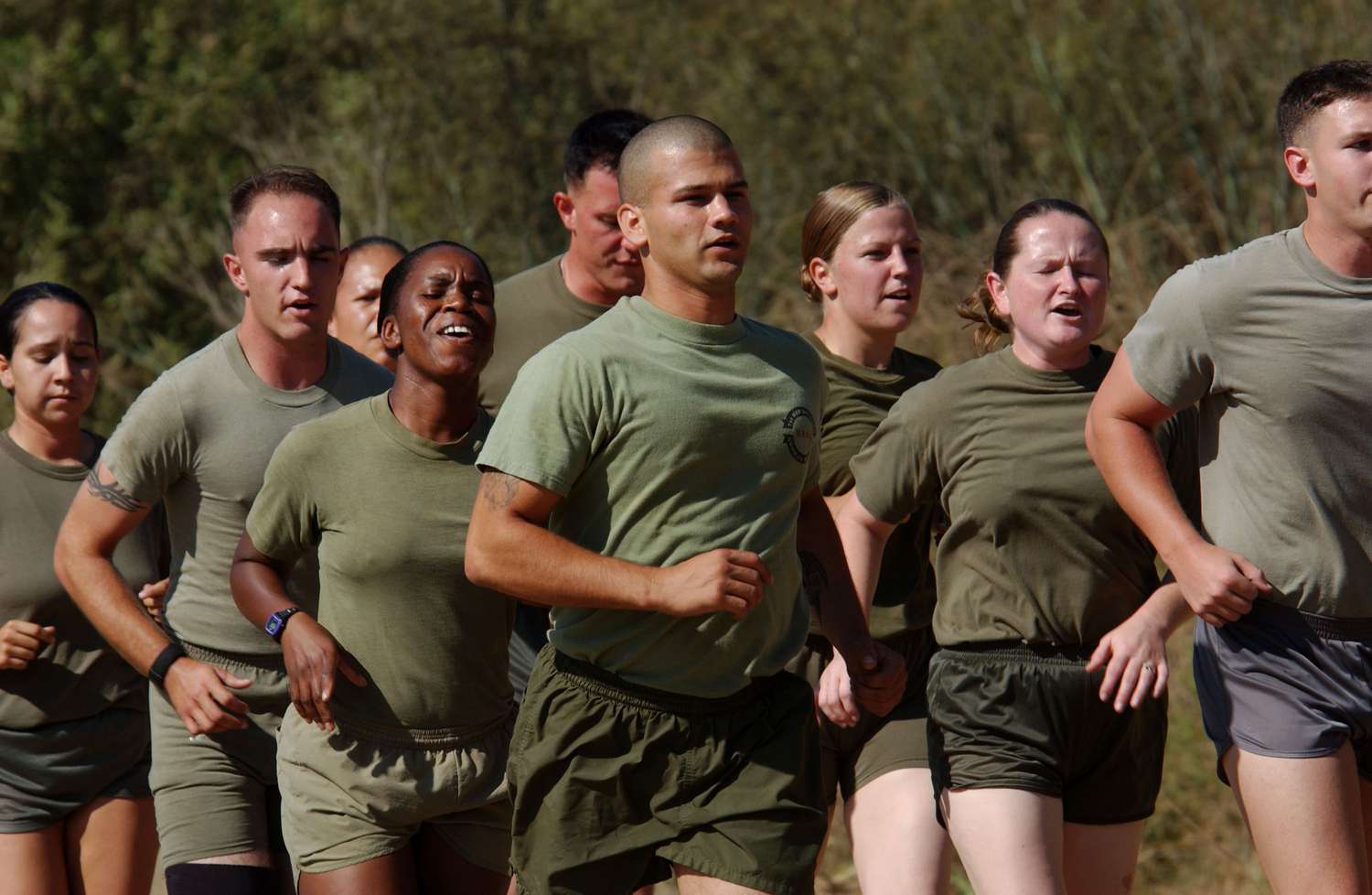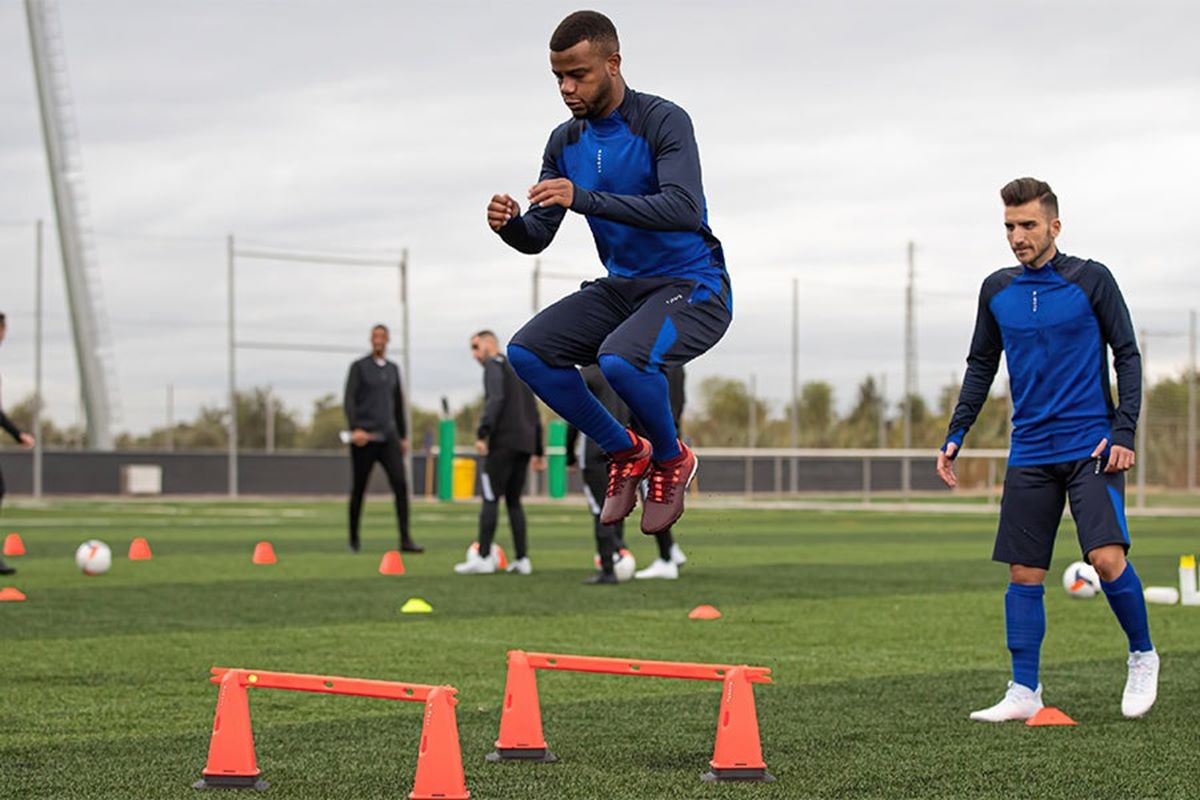Home>Misc>Featured>Which Activities Best Develop Muscular Strength And Endurance?


Featured
Which Activities Best Develop Muscular Strength And Endurance?
Modified: March 1, 2024
Discover the featured activities that effectively enhance both muscular strength and endurance to optimize your fitness journey.
Introduction
When it comes to physical fitness, two essential components to focus on are muscular strength and endurance. Muscular strength refers to the maximum amount of force that a muscle or muscle group can generate, while muscular endurance is the ability of a muscle or muscle group to repeatedly exert force or sustain a physical activity over an extended period. Developing both of these aspects is crucial for overall health, athletic performance, and daily activities.
By improving your muscular strength, you enhance your ability to perform tasks that require exerting force, such as lifting heavy objects, pushing, pulling, or engaging in activities that involve resistance. On the other hand, developing muscular endurance allows you to sustain physical activities for longer durations without fatigue. Whether you are an athlete aiming to enhance performance or an individual looking to improve your overall fitness level, it is essential to incorporate activities that target both muscular strength and endurance into your training routine.
In this article, we will explore the best activities for developing muscular strength and endurance. We will also discuss the importance of these components, factors affecting their development, and provide guidelines for effective training. By incorporating these activities and principles into your workout routine, you can achieve optimal results and improve your overall physical performance.
Understanding Muscular Strength and Endurance
Before diving into the best activities to develop muscular strength and endurance, it is important to have a clear understanding of these two components. Muscular strength and endurance are closely related but distinct qualities that play a significant role in physical performance and overall fitness.
Muscular strength refers to the maximal force that a muscle or muscle group can exert. It is typically measured by the amount of weight an individual can lift for a specific exercise, such as a one-rep max in bench press or squat. Developing muscular strength involves increasing the size and contractile capability of muscle fibers, as well as improving neuromuscular coordination.
On the other hand, muscular endurance refers to the ability of a muscle or muscle group to perform repeated contractions or sustain physical activity over a prolonged period. This component is critical for activities that require prolonged muscle usage, such as running, cycling, or swimming. By enhancing muscular endurance, you not only delay the onset of muscle fatigue but also improve your aerobic capacity, allowing you to engage in activities for longer durations.
To develop muscular strength, you need to engage in exercises that involve lifting heavy weights for a low number of repetitions. This type of training stimulates the high-threshold motor units responsible for generating maximal force. On the other hand, for muscular endurance, you should focus on exercises that involve lower resistance and higher repetitions, effectively targeting the slow-twitch muscle fibers responsible for sustained contractions.
Both muscular strength and endurance are essential for overall health and physical performance. They complement each other and contribute to functional movement, injury prevention, and overall fitness. By incorporating exercises that target both components into your training routine, you can achieve a balanced and well-rounded approach to fitness.
The Importance of Developing Muscular Strength and Endurance
Developing muscular strength and endurance offers numerous benefits that extend beyond the gym or athletic performance. Whether you are a committed athlete or simply looking to improve your overall fitness level, focusing on these components is crucial for optimal health and physical well-being. Let’s explore some of the key reasons why developing muscular strength and endurance is important.
1. Enhanced Performance: Muscular strength and endurance are vital for optimal athletic performance. Whether you participate in team sports, individual activities, or endurance events, having a strong and enduring musculature can significantly improve your performance. It allows you to generate more power, sustain physical effort for longer periods, and recover faster between bouts of exercise.
2. Functional Movement: Muscular strength and endurance are essential for performing everyday activities such as lifting objects, carrying groceries, or moving furniture. By developing these components, you improve your ability to carry out these tasks safely and efficiently, reducing the risk of injury and enhancing your overall quality of life.
3. Injury Prevention: Having a balanced and well-developed musculature is crucial for injury prevention. Muscular imbalances, where certain muscles are significantly stronger or weaker than others, can lead to poor posture, improper movement patterns, and increased risk of injuries. By focusing on both strength and endurance, you can correct imbalances and enhance the stability and function of your muscles and joints.
4. Metabolic Benefits: Developing muscular strength and endurance can also have positive effects on your metabolism. Muscle tissue is metabolically active, meaning it burns more calories at rest compared to fat tissue. As you increase your muscle mass and improve your muscular endurance, you boost your metabolic rate, making it easier to maintain a healthy weight and body composition.
5. Aging Gracefully: As we age, there is a natural decline in muscle mass and strength, resulting in decreased functional capacity and increased risk of falls and injuries. By focusing on developing muscular strength and endurance, you can slow down the age-related decline in muscle function, maintain independence, and enjoy an active, fulfilling lifestyle as you get older.
Overall, developing muscular strength and endurance is not only crucial for athletes but also for individuals of all fitness levels. The benefits extend far beyond physical appearance and can positively impact various aspects of your life. Whether you aim to improve athletic performance, enhance functional movement, prevent injuries, boost metabolism, or age gracefully, incorporating activities that target these components is key to achieving your goals.
Factors Affecting Muscular Strength and Endurance Development
Developing muscular strength and endurance is a process that is influenced by several factors. Understanding these factors can help you optimize your training approach and achieve better results. Let’s explore some key factors that affect muscular strength and endurance development.
1. Genetics: Genetics play a significant role in determining an individual’s muscle fiber composition, muscle size potential, and response to training. Some individuals may naturally have a higher proportion of fast-twitch fibers, which are associated with greater strength and power, while others may have a higher proportion of slow-twitch fibers, which are more related to endurance. While genetics can influence your starting point, it’s important to remember that everyone can improve their muscular strength and endurance through proper training.
2. Training Intensity: The intensity of your training plays a crucial role in muscular strength and endurance development. To build strength, you need to lift heavy weights that challenge your muscles, typically with fewer repetitions. On the other hand, to enhance muscular endurance, you should focus on lighter weights, higher repetitions, and shorter rest intervals. Adjusting the intensity of your training based on your goals is essential to stimulate the appropriate muscle adaptations.
3. Progressive Overload: Progressive overload is a fundamental principle of strength and endurance training. It involves gradually increasing the demands placed on your muscles over time. By progressively increasing the weight lifted, the number of repetitions performed, or the duration of the activity, you continually challenge your muscles and stimulate further strength and endurance gains. It’s important to modify your training program regularly to ensure continued progress.
4. Nutrition: Proper nutrition is essential for muscular strength and endurance development. Muscle growth and repair rely on an adequate supply of macronutrients like protein, carbohydrates, and fats, as well as essential micronutrients like vitamins and minerals. Consuming a balanced diet that meets your energy needs and provides sufficient nutrients is crucial for optimizing muscle development, recovery, and overall performance.
5. Rest and Recovery: Allowing adequate rest and recovery time is crucial for muscle growth and adaptation. During rest periods, your muscles repair and rebuild, leading to stronger and more resilient muscle fibers. Overtraining or not giving your muscles enough time to recover can hinder progress and increase the risk of injury. Adequate sleep, rest days, and proper recovery strategies like stretching, foam rolling, and massage should be incorporated into your training plan.
6. Consistency and Patience: Building muscular strength and endurance takes time and consistent effort. It’s important to stay committed to your training routine and be patient with the process. Results may not be immediate, but with consistent training, proper nutrition, and adequate rest, you will gradually see improvements in your muscular strength and endurance.
Keep in mind that everyone is unique, and the rate of progress will vary. It’s important to listen to your body, make adjustments as needed, and work with a qualified fitness professional or coach to ensure you are training effectively and safely.
Best Activities for Developing Muscular Strength
When it comes to developing muscular strength, certain exercises and activities have proven to be highly effective. These movements target major muscle groups and stimulate muscle growth and strength gains. Incorporating a variety of these activities into your training routine can help you achieve optimal results. Let’s explore some of the best activities for developing muscular strength:
1. Compound Exercises: Compound exercises are multi-joint movements that engage multiple muscle groups simultaneously. They are highly effective for developing overall muscular strength. Some examples of compound exercises include squats, deadlifts, bench press, overhead press, and rows. These exercises require you to lift heavy weights, stimulating the activation of numerous muscles and promoting full-body strength development.
2. Weightlifting: Weightlifting, or resistance training with free weights or weight machines, is one of the most efficient ways to build muscular strength. It allows you to progressively overload your muscles by increasing the weight lifted over time. Exercises such as bicep curls, tricep extensions, lunges, and shoulder presses can specifically target individual muscle groups and promote significant strength gains.
3. Bodyweight Exercises: Bodyweight exercises are an excellent option for building muscular strength without the need for specialized equipment. Movements like push-ups, pull-ups, squats, lunges, and planks engage multiple muscle groups and can be modified to suit different fitness levels. As you progress, you can increase the difficulty by adding variations or performing exercises with added resistance, such as using a weighted vest or resistance bands.
4. Plyometric Exercises: Plyometric exercises are explosive movements that involve rapid muscle contractions and maximal force generation. They are highly effective for developing power and explosive strength. Plyometric exercises include box jumps, jump squats, medicine ball throws, and clapping push-ups. These exercises improve muscle strength and enhance athletic performance.
5. Strongman Training: Strongman training involves unconventional exercises and implements like tire flips, farmer’s carries, and log presses. These activities challenge your muscles in different ways and require substantial strength and power. Strongman training not only improves muscular strength but also enhances functional strength and overall physical performance.
6. Resistance Bands: Resistance bands are versatile tools that can be used for strength training. They provide varying levels of resistance and can effectively target different muscle groups. Exercises such as bicep curls, lateral raises, resisted squats, and rows can be performed using resistance bands to build muscular strength and promote muscle growth.
7. Isometric Exercises: Isometric exercises involve holding a static position and resisting against an immovable force. Examples include planks, wall sits, and static holds. Isometric exercises improve muscular strength and stability, particularly in the core and upper body muscles.
When incorporating these activities into your training routine, it’s essential to focus on proper form and technique while gradually increasing the intensity and load. Working with a qualified fitness professional or coach can ensure that you are performing exercises correctly and safely, maximizing your muscular strength development.
Best Activities for Developing Muscular Endurance
Developing muscular endurance is crucial for activities that require prolonged muscle usage and the ability to sustain physical effort over time. By targeting the slow-twitch muscle fibers responsible for sustained contractions, you can improve your muscular endurance. Incorporating these activities into your training routine will help you enhance your endurance levels and perform better in endurance-based activities. Let’s explore some of the best activities for developing muscular endurance:
1. Endurance Running or Jogging: Running or jogging at a steady pace for an extended period is an excellent way to build muscular endurance. It challenges the lower body muscles, particularly the calves, quadriceps, and hamstrings. Start with shorter distances and gradually increase your duration or distance as your endurance improves.
2. Cycling: Cycling is another effective activity for developing muscular endurance. The repetitive motion of cycling engages the lower body muscles, including the quadriceps, hamstrings, and glutes. You can vary the intensity by adjusting the resistance or incline on a stationary bike or choosing challenging terrains for outdoor cycling.
3. Swimming: Swimming is a low-impact activity that engages the entire body, making it an excellent choice for developing overall muscular endurance. It challenges the muscles of the arms, shoulders, chest, back, core, and legs. By incorporating different swimming strokes and intervals, you can enhance endurance and improve cardiovascular fitness.
4. Circuit Training: Circuit training involves performing a series of exercises in succession, targeting different muscle groups. By minimizing rest intervals between exercises, you keep your heart rate elevated, improve muscular endurance, and challenge multiple muscle groups. Include a combination of resistance exercises, bodyweight movements, and cardio exercises in your circuit to target both strength and endurance.
5. High-Intensity Interval Training (HIIT): HIIT workouts involve alternating between short bursts of high-intensity exercise and periods of rest or lower intensity. This type of training challenges both aerobic and anaerobic systems, improving cardiovascular fitness and muscular endurance. It can involve exercises like burpees, jumping jacks, mountain climbers, and squat jumps.
6. Circuit Weight Training: Circuit weight training combines strength training exercises with minimal rest periods. By using lighter weights and performing a high number of repetitions, you target endurance and muscle fatigue. Design a circuit that includes exercises for major muscle groups, performing each exercise one after another without rest, and repeat the circuit for multiple sets.
7. Rowing: Rowing is a full-body exercise that engages the muscles of the legs, back, arms, and core. It provides a low-impact, high-intensity workout that promotes muscular endurance and cardiovascular fitness. Rowing machines simulate the motion of rowing a boat and allow you to adjust the resistance to match your fitness level.
When incorporating these activities, focus on progressively increasing the duration or intensity over time and incorporating intervals or increasing resistance to continually challenge your muscles. Remember to listen to your body, allow for proper rest and recovery, and consult with a fitness professional to ensure proper form and technique.
Combination Exercises for Building Muscular Strength and Endurance
Combination exercises are a great way to simultaneously develop both muscular strength and endurance. These exercises involve engaging multiple muscle groups and incorporating both strength and cardiovascular components. By incorporating combination exercises into your training routine, you can efficiently target both aspects and maximize your overall fitness. Let’s explore some effective combination exercises for building muscular strength and endurance:
1. Burpees: Burpees are a full-body exercise that combines a squat, push-up, and explosive jump. They target the legs, core, chest, and upper body muscles. Burpees are great for building both strength and endurance as they involve bodyweight resistance, explosive movements, and elevate your heart rate. Incorporate burpees into your training routine with different variations and increasing the number of repetitions to progressively challenge yourself.
2. Kettlebell Swings: Kettlebell swings are a compound exercise that engages the hips, glutes, hamstrings, and core. This exercise combines both strength and endurance, as it requires power and controlled movements throughout the exercise. Kettlebell swings are performed by swinging the kettlebell between the legs and then forcefully extending the hips to swing the kettlebell in front of you. Gradually increase the weight of the kettlebell and the number of repetitions to continue challenging yourself.
3. Mountain Climbers: Mountain climbers are a dynamic exercise that targets the core, shoulders, and lower body muscles, as well as elevates your heart rate. Start in a push-up position and alternate bringing your knees towards your chest in a running motion. This exercise not only builds strength in the upper body and core but also improves cardiovascular endurance. Increase the intensity by performing mountain climbers at a faster pace or incorporating them into a circuit.
4. Dumbbell Thrusters: Dumbbell thrusters are a combination exercise that targets the upper and lower body muscles. This exercise involves performing a squat while simultaneously pressing the dumbbells overhead. It engages the quadriceps, glutes, shoulders, and triceps, providing both a strength and cardiovascular challenge. Start with lighter weights and gradually increase as your strength and technique improve.
5. Box Jumps: Box jumps are an explosive plyometric exercise that targets the lower body muscles, particularly the quadriceps, hamstrings, and glutes. They involve jumping onto a raised platform, such as a sturdy box or step, and then stepping or jumping back down. Box jumps not only build leg strength and power but also improve cardiovascular endurance. Start with a lower height and gradually increase as your strength and confidence improve.
6. Battle Rope Slams: Battle rope slams are a dynamic exercise that targets the upper body, core, and cardiovascular system. This exercise involves holding onto the ends of a battle rope and performing slams by forcefully raising your arms and slamming the ropes onto the ground repeatedly. Battle rope slams improve grip strength, shoulder stability, and overall endurance. Aim for higher intensity and faster repetitions to challenge both your strength and endurance.
When incorporating combination exercises, focus on proper form and technique to ensure safety and effectiveness. Start with lighter weights or lower intensity variations, gradually increasing as your strength and endurance improve. Additionally, be mindful of your fitness level and any pre-existing conditions, and consult with a qualified fitness professional if needed.
Training Guidelines for Muscular Strength and Endurance Development
When embarking on a journey to develop muscular strength and endurance, it’s important to follow certain guidelines to ensure effective and safe progress. By incorporating these guidelines into your training routine, you can optimize your results and minimize the risk of injury. Let’s explore some training guidelines for developing muscular strength and endurance:
1. Set Clear Goals: Before beginning your training, set clear and specific goals. Determine what level of muscular strength and endurance you want to achieve, whether it’s increasing your one-rep max on a particular exercise or being able to run a certain distance without fatigue. Setting goals allows you to structure your training program effectively and track your progress along the way.
2. Follow a Structured Program: Creating a well-structured training program is essential for developing muscular strength and endurance. Your program should include a combination of exercises targeting different muscle groups, varying intensities, and progressive overload. A qualified fitness professional or coach can help design a program tailored to your specific goals and abilities.
3. Warm-Up and Cool Down: Prior to each training session, warm up with dynamic stretches, light cardio, or mobility exercises. This helps increase blood flow, loosen up the muscles, and prepare your body for the upcoming workout. Cooling down after each session with static stretching and light movements helps reduce muscle soreness and aids in recovery.
4. Rest and Recovery: Allow your muscles sufficient time to rest and recover between workouts. This is when muscles repair and rebuild, leading to strength and endurance gains. Aim for at least one to two days of rest per week and listen to your body. It’s normal to experience some muscle soreness, but if you’re in pain or overly fatigued, give yourself additional rest days or seek medical advice.
5. Proper Form and Technique: Focus on maintaining proper form and technique throughout your exercises. This ensures safety and effectiveness, and maximizes muscle activation. If you’re unsure about the correct form, seek guidance from a qualified fitness professional who can provide proper instruction and feedback.
6. Gradually Increase Intensity: Progressively overload your muscles by gradually increasing the intensity of your workouts. This can be done by increasing the weight lifted, the number of repetitions performed, the duration of the activity, or the level of resistance used. Avoid jumping too quickly into high-intensity or heavy workouts, as this can increase the risk of injury. Gradual progression allows your muscles to adapt and respond effectively.
7. Nutrition and Hydration: Fueling your body with proper nutrition and hydration is crucial for muscular strength and endurance development. Consume a well-balanced diet that includes lean proteins, carbohydrates, healthy fats, and plenty of fruits and vegetables. Stay hydrated before, during, and after your workouts to maintain optimal performance.
8. Monitor and Track Progress: Regularly assess and track your progress to stay motivated and make necessary adjustments to your training program. Keep a record of the exercises, sets, and repetitions performed, as well as any improvements in strength or endurance. This data can help you identify areas for improvement and celebrate your achievements along the way.
Remember that consistency is key when it comes to developing muscular strength and endurance. Stick to your training program, be patient with your progress, and celebrate each milestone achieved. With proper guidance, dedication, and the right mindset, you can achieve remarkable improvements in both muscular strength and endurance.
Common Mistakes to Avoid
When it comes to developing muscular strength and endurance, it’s important to be aware of common mistakes that can hinder progress or increase the risk of injury. By avoiding these mistakes, you can ensure that your training is effective, safe, and yielding the desired results. Let’s explore some common mistakes to avoid:
1. Neglecting Proper Form: One of the most common mistakes is neglecting proper form and technique during exercises. Poor form not only reduces the effectiveness of the exercise but also increases the risk of injury. Take the time to learn and practice the correct form for each exercise. If needed, seek guidance from a qualified fitness professional to ensure you are performing the exercises correctly.
2. Skipping Warm-Up and Cool Down: Skipping the warm-up and cool-down phases of your workout is a common mistake. Properly warming up before exercise helps prepare your muscles and joints for the upcoming intensity, reduces the risk of injury, and enhances performance. Similarly, cooling down with stretches after a workout helps promote muscle recovery and flexibility. Dedicate time to both warm-up and cool-down to maximize the benefits of your training.
3. Overtraining: Overtraining occurs when you push your body beyond its capacity without allowing adequate rest and recovery. While it’s important to challenge yourself, it’s equally important to give your body time to recover and rebuild. Overtraining can lead to fatigue, decreased performance, increased risk of injury, and burnout. Listen to your body and incorporate rest days into your training program to avoid overtraining.
4. Lack of Progression: Progression is key to developing muscular strength and endurance. Failing to progressively overload your muscles by increasing the weight, repetitions, or intensity can result in a plateau in your progress. Gradually challenge your muscles by making small, incremental increases in intensity or load over time. This will help your muscles adapt and continue to grow stronger.
5. Neglecting Proper Nutrition and Hydration: Proper nutrition and hydration are crucial for fueling your body and maximizing the benefits of your training. Failing to consume adequate nutrients and fluids can negatively impact your performance and recovery. Ensure you are eating a balanced diet that provides the necessary macronutrients and micronutrients, and hydrate properly before, during, and after your workouts.
6. Lack of Variety: Performing the same exercises repeatedly without introducing variety into your training routine can lead to muscle imbalances and decreased motivation. It’s important to incorporate a variety of exercises that target different muscle groups and challenge your body in different ways. This helps prevent boredom, ensures balanced muscle development, and keeps your workouts fresh and exciting.
7. Ignoring the Importance of Rest: Rest is just as important as exercise when it comes to muscular strength and endurance development. Your muscles need time to repair and recover in order to grow stronger. Neglecting adequate rest can lead to overuse injuries and hinder progress. Make sure to schedule regular rest days into your training program and prioritize quality sleep and recovery practices.
8. Comparing Yourself to Others: Comparing your progress to others can be demotivating and counterproductive. Everyone’s fitness journey is unique, and progress varies from person to person. Focus on your own goals, track your own progress, and celebrate your individual achievements. Remember that consistency and dedication will yield long-term results.
Avoiding these common mistakes will help you stay on the right track and make steady progress in your journey towards developing muscular strength and endurance. By maintaining proper form, allowing for proper rest and recovery, and fueling your body adequately, you can maximize the benefits of your training and achieve your desired fitness goals.
Conclusion
Developing muscular strength and endurance is crucial for overall health, athletic performance, and daily activities. By targeting both components, you can achieve a well-rounded approach to fitness, enhancing your ability to perform tasks that require exerting force and sustaining physical activity over time. Incorporating the best activities for developing muscular strength and endurance, such as compound exercises, weightlifting, bodyweight movements, and cardio-based workouts, will help you achieve optimal results.
Understanding the factors that affect muscular strength and endurance development, such as genetics, training intensity, nutrition, and rest, allows you to tailor your approach and optimize your progress. Following training guidelines, including setting clear goals, following a structured program, and monitoring progress, ensures that you stay on track and continue to challenge yourself effectively. Avoiding common mistakes, such as neglecting proper form, skipping warm-up and cool-down, overtraining, and comparing yourself to others, will help you maintain safe and efficient training practices.
Remember, building muscular strength and endurance takes time and dedication. Be patient with your progress, listen to your body, and make adjustments as needed. Stay consistent, fuel your body with proper nutrition, and prioritize rest and recovery. With the right mindset, training approach, and commitment, you can achieve significant improvements in muscular strength and endurance, leading to enhanced performance, functional movement, injury prevention, and overall well-being.








